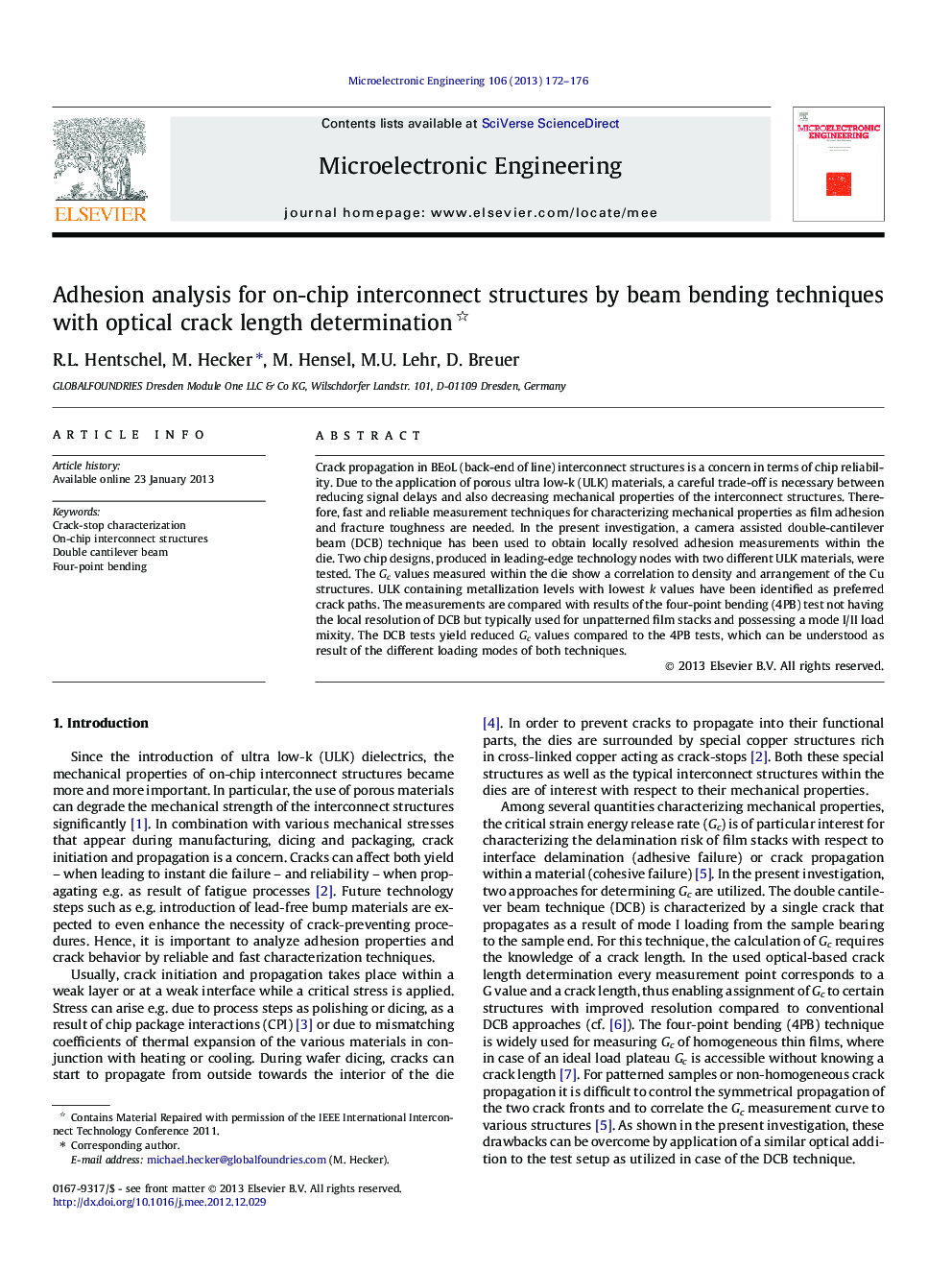| Article ID | Journal | Published Year | Pages | File Type |
|---|---|---|---|---|
| 542875 | Microelectronic Engineering | 2013 | 5 Pages |
Crack propagation in BEoL (back-end of line) interconnect structures is a concern in terms of chip reliability. Due to the application of porous ultra low-k (ULK) materials, a careful trade-off is necessary between reducing signal delays and also decreasing mechanical properties of the interconnect structures. Therefore, fast and reliable measurement techniques for characterizing mechanical properties as film adhesion and fracture toughness are needed. In the present investigation, a camera assisted double-cantilever beam (DCB) technique has been used to obtain locally resolved adhesion measurements within the die. Two chip designs, produced in leading-edge technology nodes with two different ULK materials, were tested. The Gc values measured within the die show a correlation to density and arrangement of the Cu structures. ULK containing metallization levels with lowest k values have been identified as preferred crack paths. The measurements are compared with results of the four-point bending (4PB) test not having the local resolution of DCB but typically used for unpatterned film stacks and possessing a mode I/II load mixity. The DCB tests yield reduced Gc values compared to the 4PB tests, which can be understood as result of the different loading modes of both techniques.
Graphical abstractFigure optionsDownload full-size imageDownload as PowerPoint slide
